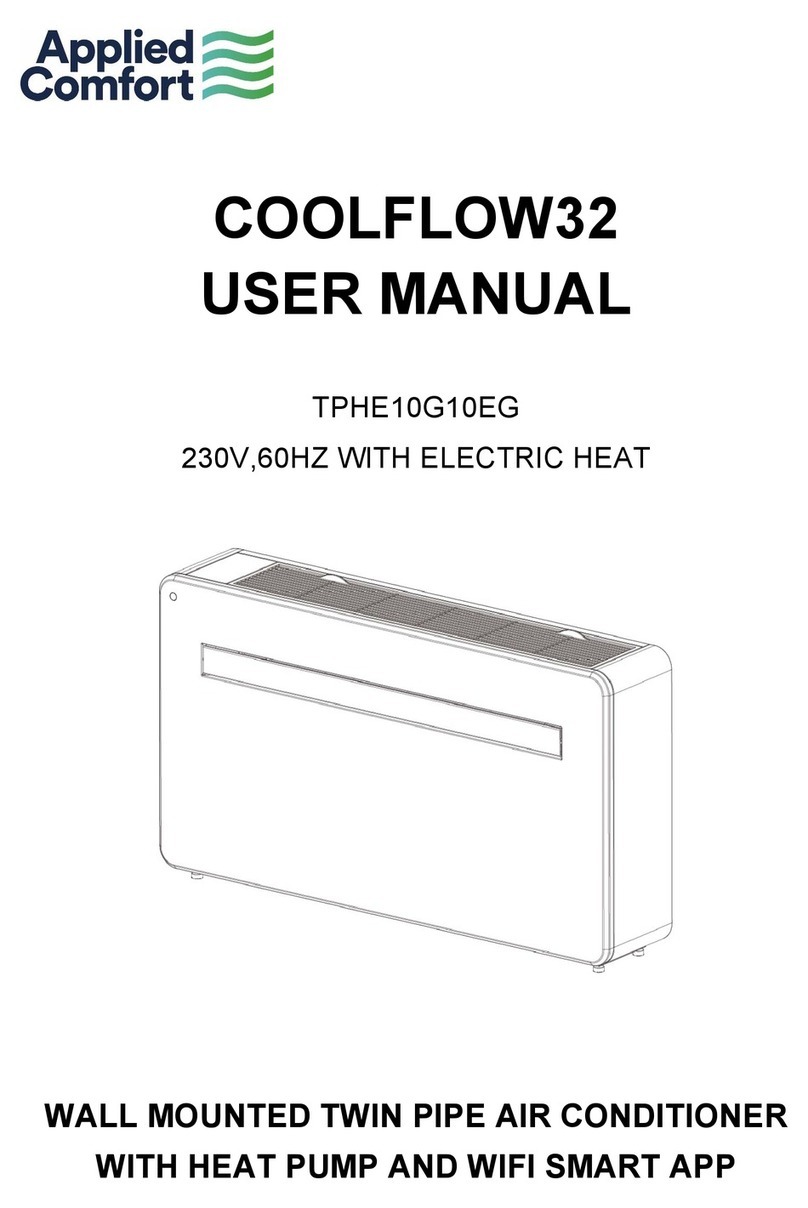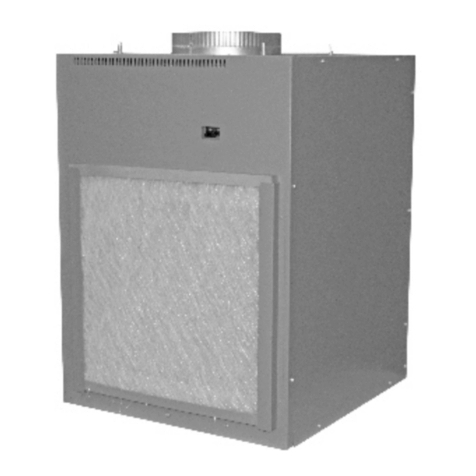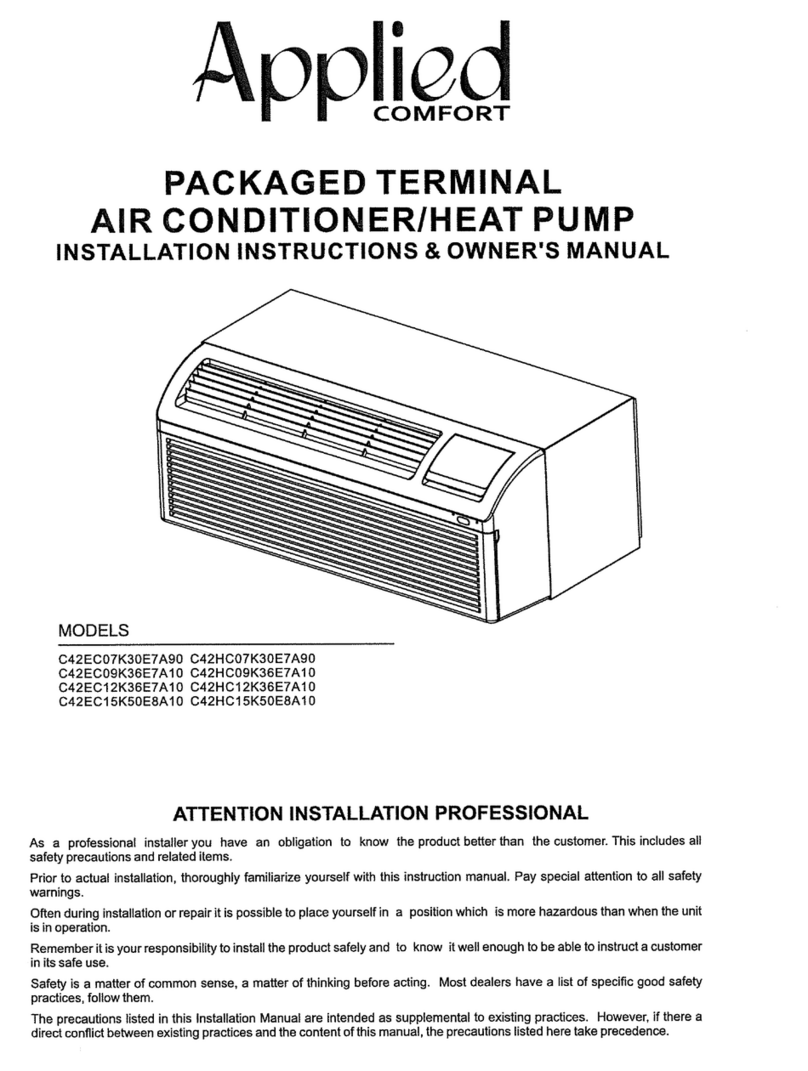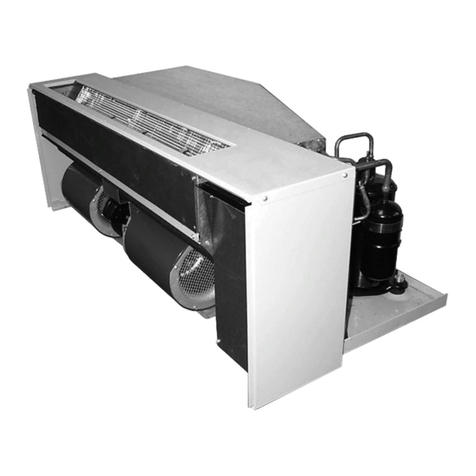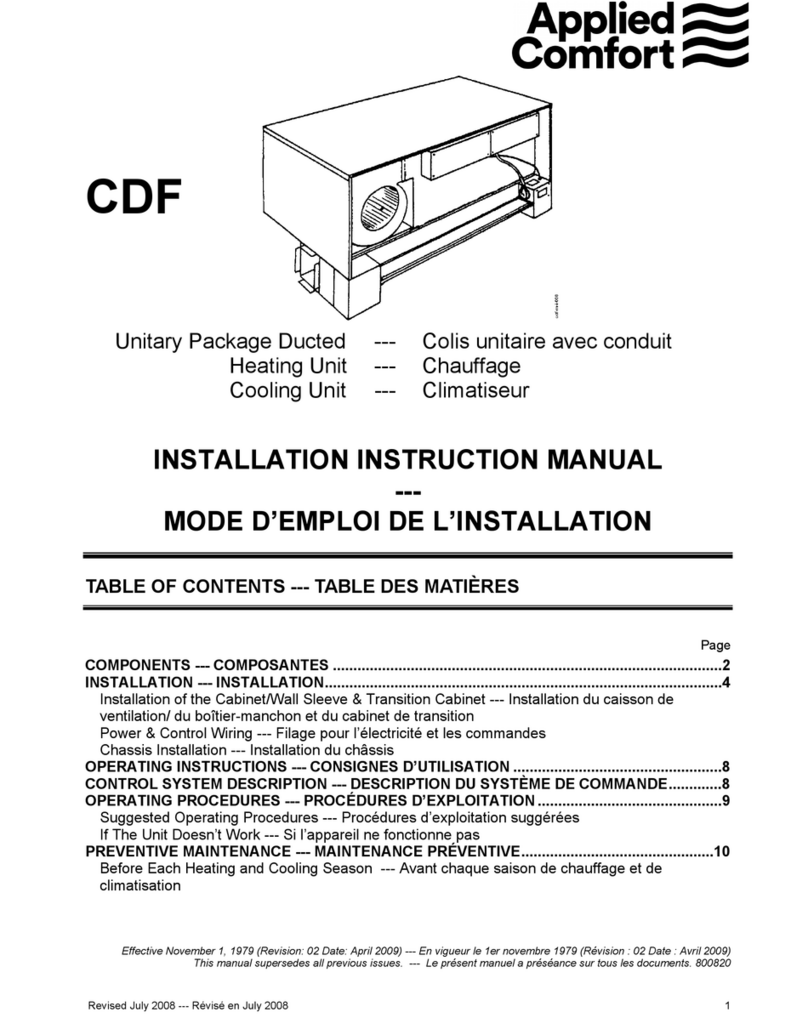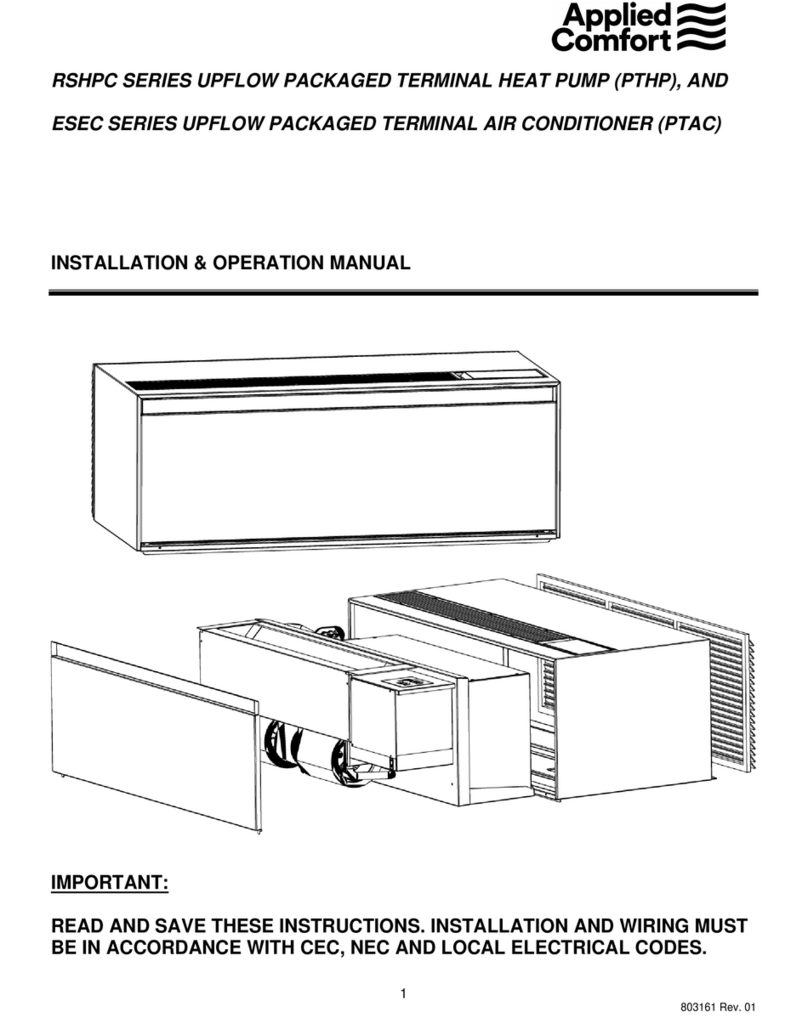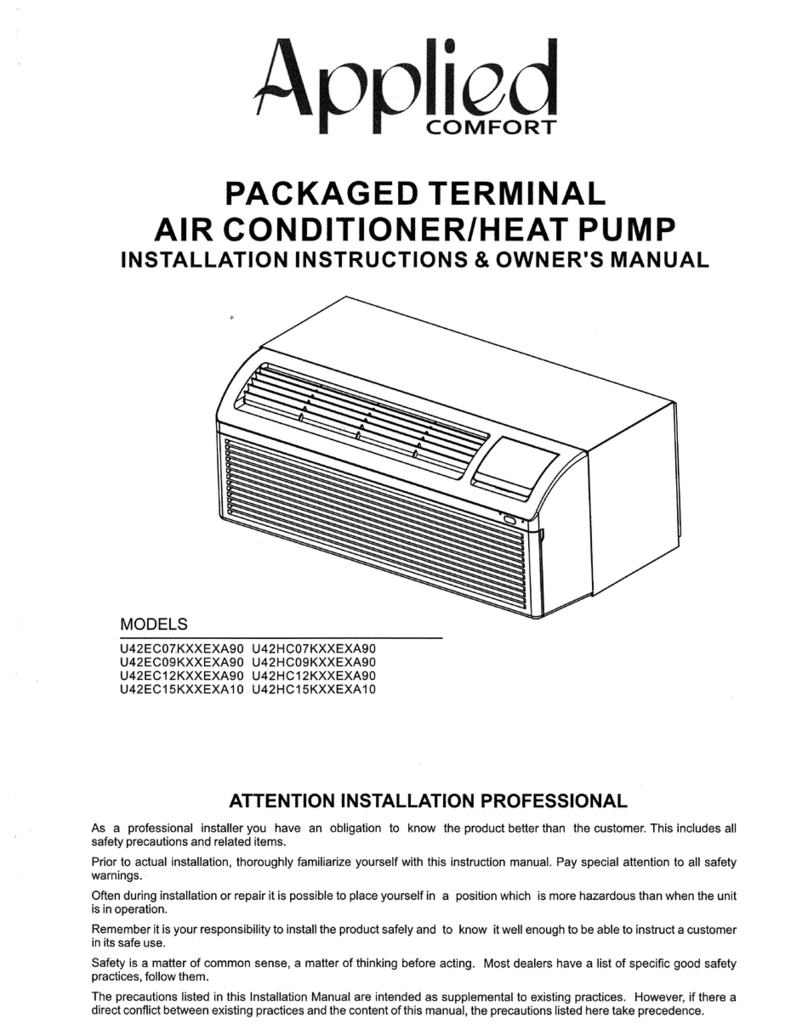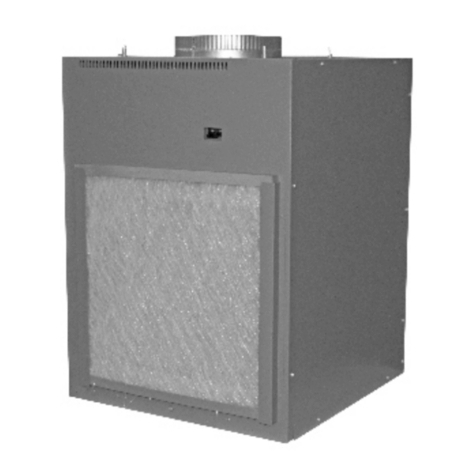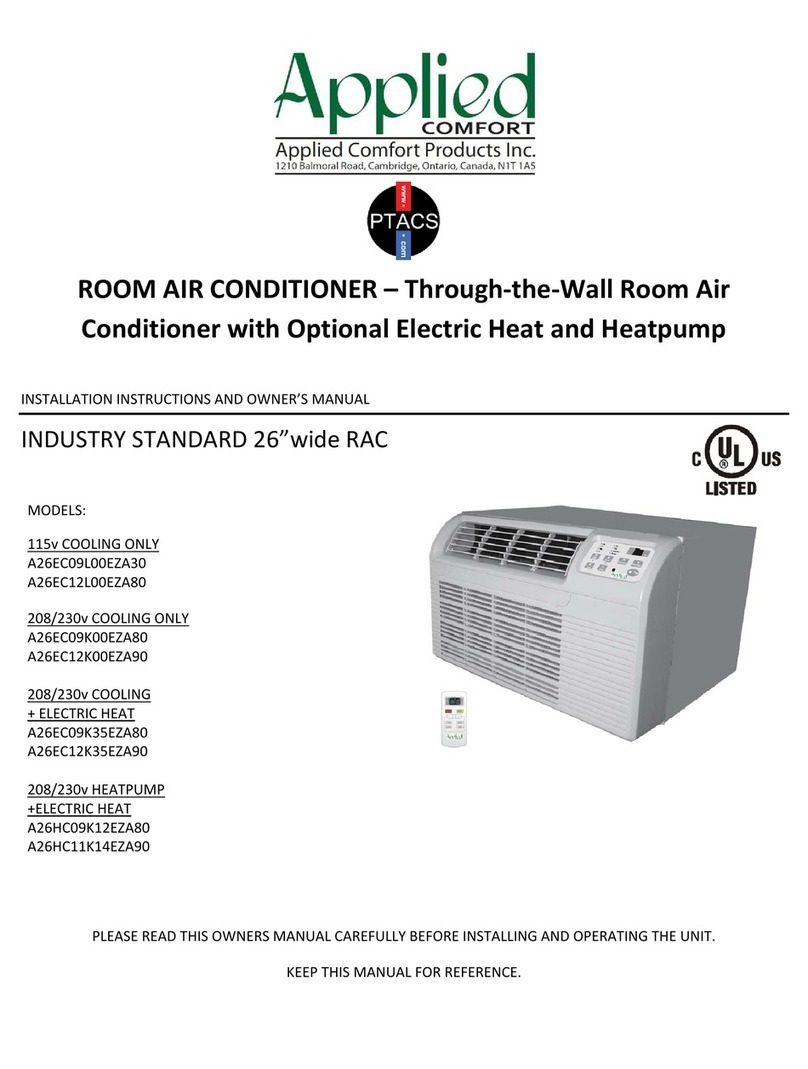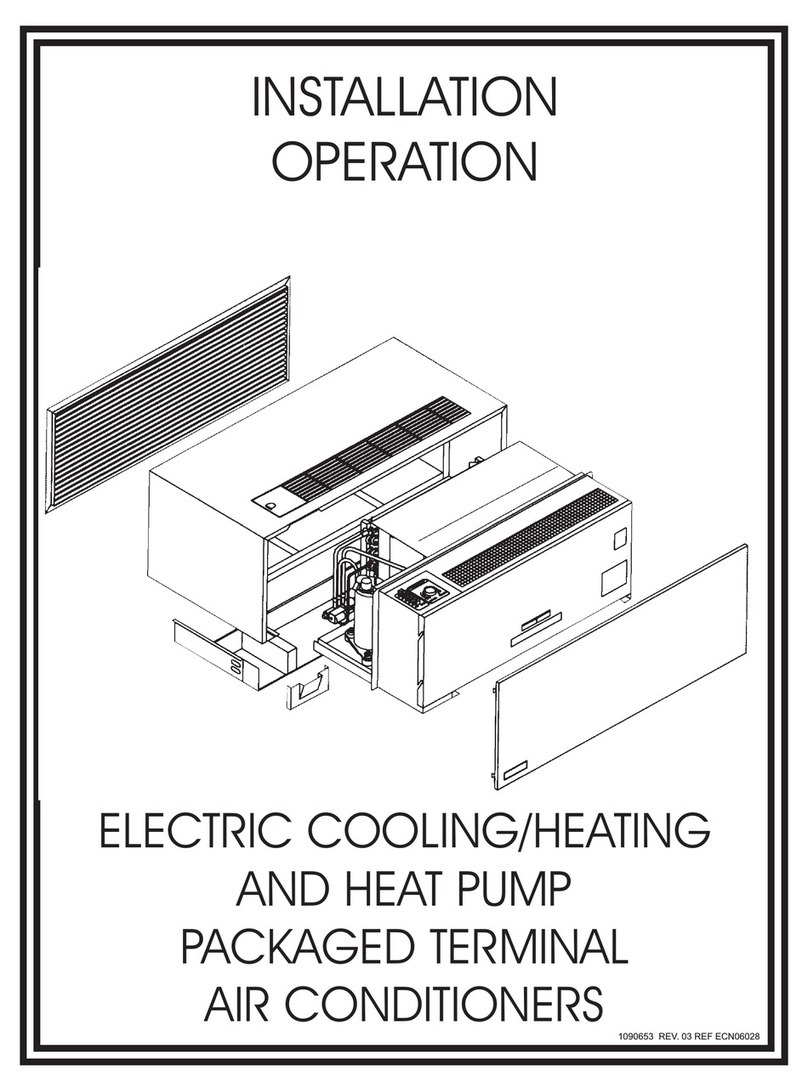
9 803877 Rev. 00
WALL THERMOSTAT OPERATION
Heat Sets the unit into heating mode.
Initiates heating when room
temperature falls below set point.
Off Disables heating and cooling
modes, but allows control of fan.
Cool Sets the unit into cooling mode.
Initiates cooling when room
temperature rises above set point.
Auto
(not shown) Found on automatic changeover
thermostats only. Allows the
thermostat to decide whether it
should be in the heating or cooling
mode. Usually a 4 Fdifferential
or “deadband” will exist between
heating and cooling set points to
prevent inadvertent rapid
switching between modes.
Temperature
Setting Establishes the “set point”, or
desired room temperature.
Fan On Synonymous with “Fan
Continuous”. Fan will continue to
run after the heating and cooling
function has cycled off. Fan will
continue to run even when mode
switch is in Off position.
Fan Auto Synonymous with “Fan
Intermittent”. Fan will cycle on
and off with the heating cycle or
cooling cycle, and will not operate
between cycles.
ADDITIONAL FEATURES:
Some additional features of the Electronic Control
units are as follows:
Room Freeze Protection
This feature is enabled when the unit is shipped from
the factory. The feature can be disabled by qualified
service personnel. If power is available to the unit, and
regardless of whether it is turned ON or OFF, the unit
will automatically supply heat to the room with the fan
running at low fan speed if the room temperature falls
to 50°F (10ºC). The heat will turn off when the room
temperature reaches 55°F (13ºC). For the feature to
work, the unit must be configured with an electric
heater. The feature is enabled whether the unit is
configured for keypad or remote thermostat. The
protection remains active when the unit is OFF, for
either keypad or remote thermostat application, as long
as the unit is plugged in, power is available, and a heat
source is configured in the unit and is working.
Compressor Short-Cycle Protection
If the electronic control shuts the compressor down for
any reason, a 3 minute time delay will elapse before
the compressor is allowed to re-start. This prevents
compressor overload during re-start due to unequal
system refrigerant pressures.
Indoor Coil Freeze Protection
Control of frost on the evaporator coil due to low
indoor loads, or cold outdoor ambient temperatures, is
provided.
Low Outdoor Temperature Lock-out
If the outdoor temperature is too low for proper
compressor operation, cooling operation will be
suspended until the outdoor temperature rises to an
acceptable point, depending on the application.
Indoor Temperature Limiting (Keypad Control
Only)
Using the keypad control and display, high and low
temperature limits can be established to prevent the
user from entering set point temperatures colder or
warmer than what the property manager or hotel
operator may desire. The temperature limit choices are
as follows:
Configuration Code Low Limit °F
(ºC) High Limit °F
(ºC)
R1 63 (17) 86 (30)
R2 65 (18) 86 (30)
R3 65 (18) 90 (32)
R4 67 (19) 88 (31)
R5 67 (19) 92 (33)
R6 69 (20) 90 (32)
R7 69 (20) 72 (22)
The procedure to set the limits is as follows:
Depress the On/Off key, the °F/°C key, and the
Warmer key simultaneously for 5 seconds to enter the
limit setup mode. The Warmer and Cooler keys will
scroll through the R-values indicated in the above
table. Once the desired R-value has been obtained on
the display, press the On/Off key to accept the change,
and then press it again to effect the change and restore
the normal display.
